Unlocking the Magic of Mindfulness for Kids
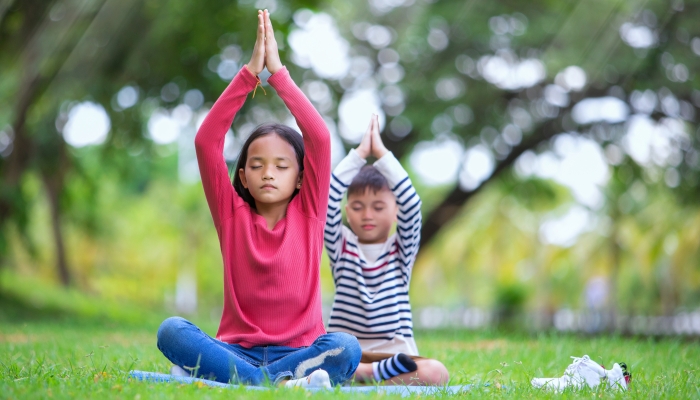
- Mindfulness is the practice of being present in the moment, observing all life offers, and controlling our responses.
- Teaching mindfulness to children can help them better deal with stress, anxiety, and disappointment.
- There are lots of fun mindfulness activities your child can enjoy and many ways to include mindfulness exercises in your child’s daily life.
Mindfulness can reduce stress, teach emotional intelligence, and encourage children to focus on the present moment. Although it’s often discussed as an excellent tool for kids, it’s also fantastic for parents. Mindfulness will allow you to fully focus on your kids while you’re with them, help you take their emotional outbursts in your stride, and enable you to enjoy the little things in life.
You probably know only too well how hard it can be to be truly present. Your brain weighs heavily with the mental load, and you probably have five different things in your head at any one time. Mindfulness is the ability to silence those things and concentrate on the here and now.
Mindfulness for kids is a great way to calm down before bed or unwind after a sensory meltdown. Mindfulness for kids also teaches a life skill that your children will benefit from as they grow. Mastering mindfulness in childhood may help your child tackle life’s stresses with self-compassion.
What Is Mindfulness?
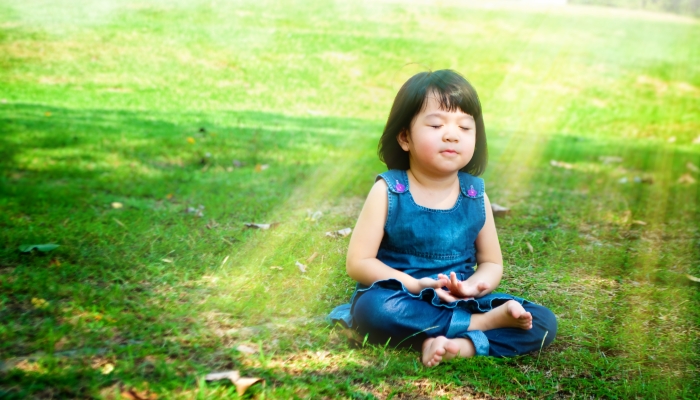
Mindfulness is the art of being present in the moment. It is about slowing down and noticing what’s happening right now.
Mindfulness meditation is simply paying attention to what’s happening right now. This could be paying attention to the taste of the orange you’re eating, noticing the sensations in your body, or observing a beautiful sunset. Mindfulness is about noticing things without judgment and accepting all that is.
What does mindfulness look like for kids?
For children, mindfulness can take many forms. It’s about slowing down and focusing on the present moment. This could be stopping to notice the leaves rustling in the wind or the sunshine pouring through the trees on a walk.
It’s about accepting your feelings without judgment and showing self-compassion and compassion to others. This could be noticing your emotions without shame or observing what your little sister is doing without getting annoyed.
Mindfulness for kids could be daily mindfulness exercises, mastering mindful breathing techniques, or a calm down corner in a quiet room where your child can escape for calming sensory activities. There are so many mindfulness practices you can share that will teach kids how to cope with the changing world around them.
Why is it Important to Teach Mindfulness to Kids?
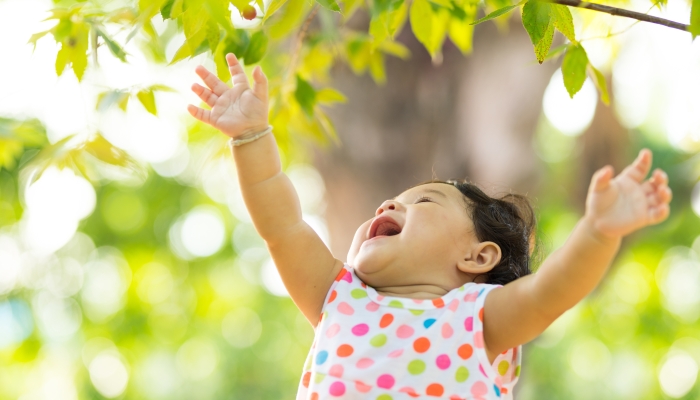
Life is unpredictable, and much as we want to protect our children from all of life’s harsh realities, we can’t. Your child will be stressed and upset as they journey towards adulthood and beyond. Mindfulness can help your child deal with challenging life events in a calmer and more controlled way.
The inner quiet learned through mindfulness for kids can be used to your child’s advantage. The practice of mindfulness, of being truly present and observing the little things, essentially puts a moment between your child and whatever is going on around them. Your child can use this moment to take a breath and react calmly to every situation. This mindset will help your child to stay in control and can make a huge difference to how stressful something feels in the moment.
Not only can mindfulness help your child deal with their emotions, but it also can positively impact cognitive and social abilities.
An Italian study on the benefits of mindfulness in a primary school setting, published in Frontiers in Psychology11. Crescentini, C., Capurso, V., Furlan, S., & Fabbro, F.. Mindfulness-Oriented Meditation for Primary School Children: Effects on Attention and Psychological Well-Being. Frontiers in Psychology. 2016;7. https://doi.org/10.3389/fpsyg.2016.00805 in 2016, “showed how the introduction of mindfulness-meditation practices in educational settings can be useful to improve children’s cognitive, emotional, and social abilities.”
An observational study, published in the Journal of Clinical Sleep Medicine22. Chick, C. F., Singh, A., Anker, L. A., Buck, C., Kawai, M., Gould, C., Cotto, I., Schneider, L., Linkovski, O., Karna, R., Pirog, S., Parker-Fong, K., Nolan, C. R., Shinsky, D. N., Hiteshi, P. N., Leyva, O., Flores, B., Matlow, R., Bradley, T., Jordan, J., Carrion, V., & O’Hara, R.. A school-based health and mindfulness curriculum improves children’s objectively measured sleep: A prospective observational cohort study. Journal of Clinical Sleep Medicine. 2022;18(9), 2261–2271. https://doi.org/10.5664/jcsm.9508 in 2022, sought to investigate whether mindfulness techniques, such as mindful breathing, could be used to improve sleep in children. The researchers concluded that: “Children receiving the curriculum gained an average of 74 minutes of total sleep time, and 24 minutes of rapid eye movement sleep, per night over the 2-year study period.”
Why do kids need to learn about mindfulness?
Learning about mindfulness in childhood means your child will benefit from these skills for life. Many sports stars, CEOs, and adults suffering from stress, anxiety, and depression learn these skills in adulthood. If you teach your child mindfulness techniques from a young age, they will become habits your child can rely on throughout life.
How can mindfulness help my child manage stress and anxiety?
All children experience stressful events in their life. It doesn’t have to be something huge; even a fallout with friends or an upcoming test can leave your child feeling anxious and unhappy. Mindfulness equips your child with the skills to manage any stress and anxiety that comes their way. Mindfulness skills will teach your child to focus on the positives instead of the negatives.
With proper mindfulness education, your child will learn how to recognize and accept their emotions without judgment or shame. Too often, people are unable to untangle their feelings or feel great shame when they do. Mindfulness will help your child learn self-regulation, increase emotional maturity, and help children stay in control even when faced with big emotions.
At What Age Can Kids Start Practicing Mindfulness?
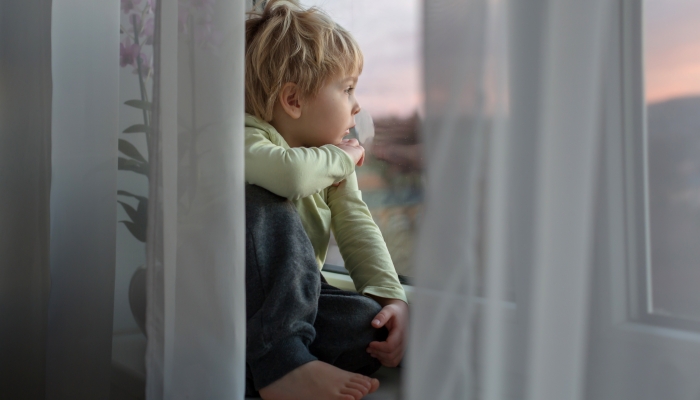
You can introduce mindfulness as part of your daily practice whenever you like. The younger, the better, if you want it to become a default setting for your little one. It’s never too late to start, however, so don’t be put off introducing mindfulness at a later stage.
Toddlers will love listening to guided meditations, watching mindfulness videos aimed at toddlers, and enjoying some quiet winding down time together before bed. Though little, toddlers can follow your breathing pattern, which is a great way to teach mindful breathing techniques. When your child drops their nap, they still benefit from some quiet time during the day, and a guided meditation is perfect for this.
As your child grows, you can add more mindfulness practice, such as more complex meditations and mindfulness games. There are lots of coloring books with a focus on self-compassion and acceptance which are great for older children.
Helpful Tips for Introducing Mindfulness to Your Kid
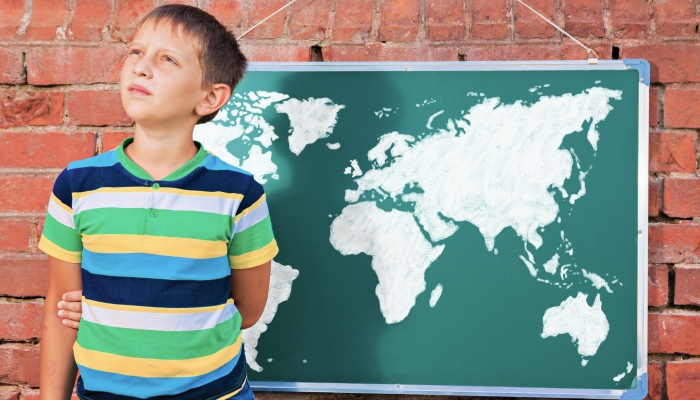
Teaching your child about mindfulness doesn’t have to be hard. Try some of these tips for introducing mindfulness to your kid:
1. Live as you preach.
The most crucial thing if you want to teach your child mindfulness is to practice it yourself. If your children spend five minutes a day practicing mindfulness techniques and the rest of the day in a highly stressed environment, the mindfulness will have limited results.
The good news is that by learning mindfulness techniques yourself and adopting this as a way of life, your children will likely benefit from a much calmer home environment. Mindfulness can help you become a more patient, non-judgemental parent who can be truly present in the moment. With a wonderful parent like that, your child will feel the benefits.
2. Do it daily.
If you want mindfulness to become a habit for your child, you need to include it each day. Schedule daily mindfulness time so that it becomes something your kids do on autopilot. Try to focus fully on the present moment, rather than doing a million things at once. It’s not always possible, but do try to schedule focused time with your children each day so you can give them your full attention.
When you feel your emotions getting the better of you, it can be helpful to notice the sensations in your body. Doing this aloud will also help your children understand their feelings better. Encourage your children to pay attention to how their bodies feel throughout the day, as this will help them identify changes in their bodies when they experience different emotions.
3. Mix it up.
There are many ways to engage your kids with mindfulness techniques, from introducing a quiet time policy to guided meditations before bed, or from slowly savoring food to journaling. Encourage your children to use different techniques to build their mindfulness muscles. The more they practice this vital skill, the better they’ll be able to rely on it in times of need.
5 Fun Activities That Teach Mindfulness to Kids
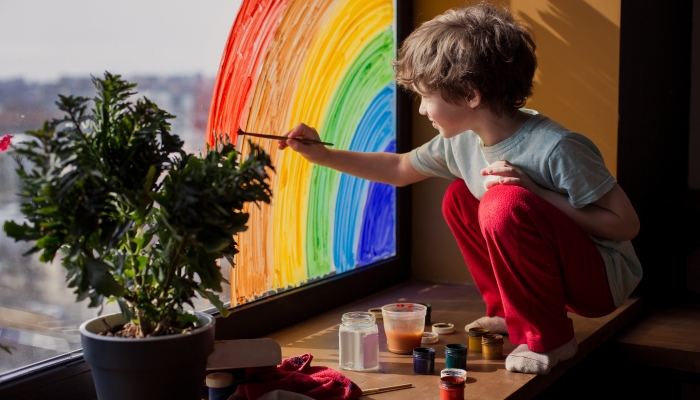
Mindfulness is a state of mind, but you can teach the quiet and calm of mindfulness through the following activities:
1. Mindfulness Meditation
A simple mindfulness for kids meditation is simply noticing how you feel in your body. To do this, you should all lie comfortably in a quiet space. Try to take deep breaths in and out. Let your body relax. Now begin to notice how your body is feeling. Shift slightly if you’re feeling uncomfortable.
Talk your child through the sensations you’re noticing in your body, and ask them to share theirs. Can you feel your heart beating in your chest? Do your legs feel tired? This mindfulness meditation is simply about noticing what’s going on inside you. You can repeat this during stress to help your child notice the physical changes of stress and anxiety.
2. Gratitude Game
It’s easy to feel overwhelmed with negativity when life is tough. That negativity can leach out into other areas of your life and leave you feeling like everything is terrible. Gratitude journals have gained popularity recently as adults try to change their mindsets in challenging times.
The gratitude game teaches the same skills; learning it in childhood will set your child up for life. Including this as part of your daily routine will train your child to always notice the positives in life, even when times are tough.
Each night, before bed, encourage your child to think of three positive things from the day. You should share yours, too. They could be anything from having had a nice dinner to handling an argument well or working hard at school. Take time to talk about why each was positive and how this impacted the rest of your day.
3. Guided Meditations
Guided meditations are a fantastic way to practice mindfulness as a family, and there are many different meditations to choose from. You can get guided meditation audio stories to listen to at bedtime and guided meditation videos to use earlier in the day. Your child will enjoy the calm time imposed by the guided meditations, and you’ll likely benefit from some quiet time too.
3. Mindful Yoga
Mindful yoga poses encourage your child to focus before meditation. Mindful yoga is a great way to turn your child’s love of physical movement into a calm-down routine. There are many yoga routines for kids online; search for routines focusing on mindfulness. Another added benefit to mindful yoga is that physical activity can lift your mood, so your kids will benefit from the positives of moving their bodies. Even boisterous toddlers will enjoy mindful yoga for toddlers.
4. Coloring
Coloring was one of the first mindfulness activities to really take off for adults. Coloring is already a kid-approved activity, so you won’t have trouble selling this one to your kids. Coloring is a mindful activity because it is calming, slow, and encourages children to pay close attention to their actions.
Coloring is a great activity when your child needs some calm down time. Have a coloring station set up in a quiet corner of your house so your child has somewhere to retreat to when needed.
References
- Crescentini, C., Capurso, V., Furlan, S., & Fabbro, F. (2016). Mindfulness-Oriented Meditation for Primary School Children: Effects on Attention and Psychological Well-Being. Frontiers in Psychology, 7. https://doi.org/10.3389/fpsyg.2016.00805
- Chick, C. F., Singh, A., Anker, L. A., Buck, C., Kawai, M., Gould, C., Cotto, I., Schneider, L., Linkovski, O., Karna, R., Pirog, S., Parker-Fong, K., Nolan, C. R., Shinsky, D. N., Hiteshi, P. N., Leyva, O., Flores, B., Matlow, R., Bradley, T., Jordan, J., Carrion, V., & O’Hara, R. (2022). A school-based health and mindfulness curriculum improves children’s objectively measured sleep: A prospective observational cohort study. Journal of Clinical Sleep Medicine, 18(9), 2261–2271. https://doi.org/10.5664/jcsm.9508
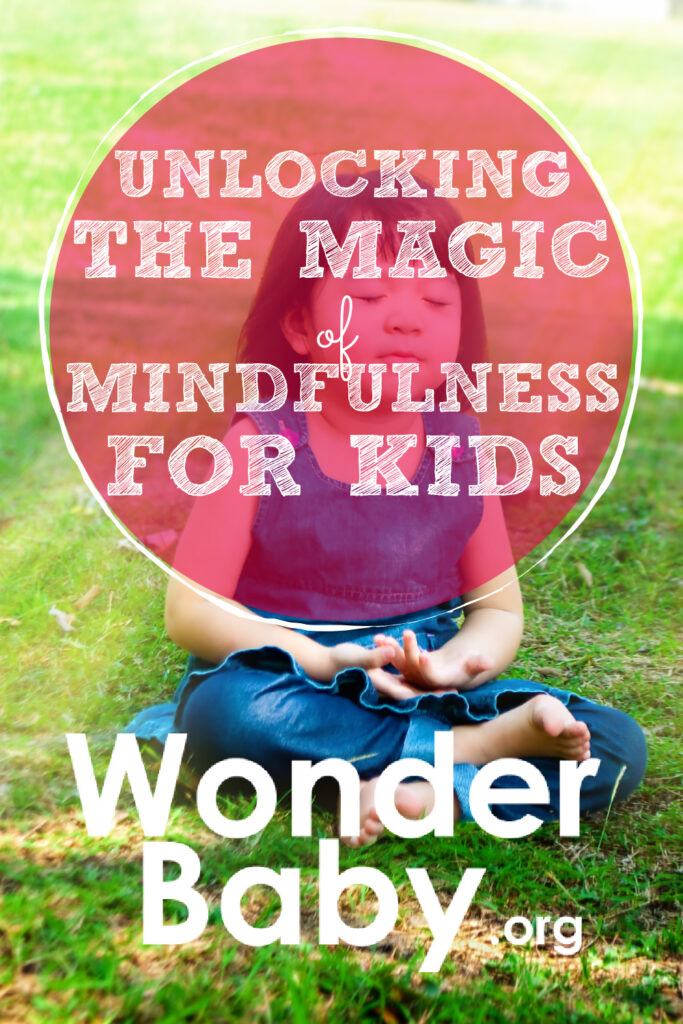
Related Posts
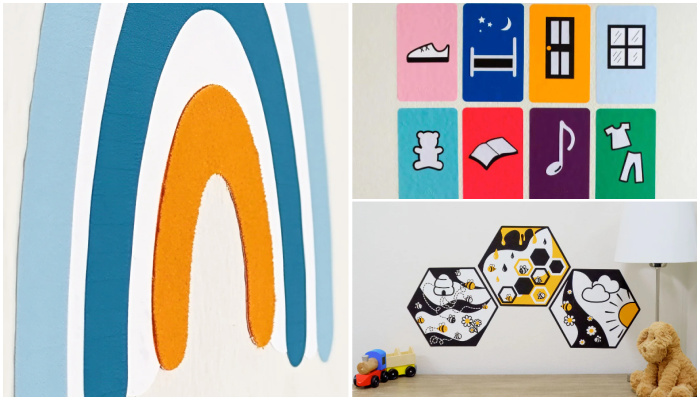
Parenting
Sensory Wall Art: 5 Tips to Create a Room Your Blind or Low-Vision Child Will Love
Even if your child can’t see their surroundings, personalizing and decorating their room with thoughtful, sensory-friendly design can make a big difference in their confidence, independence, and joy.
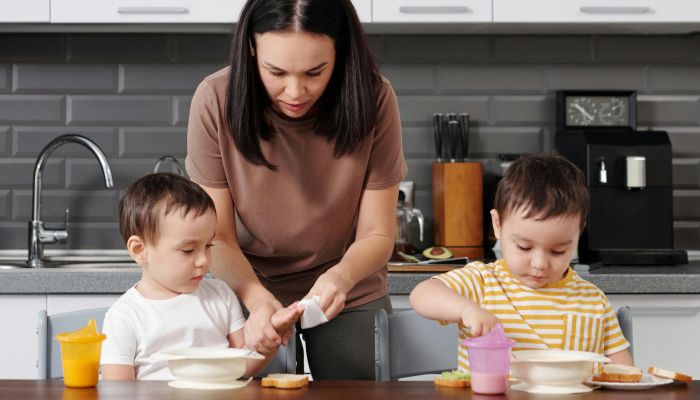
Parenting
4 Tips to Manage Twins Alone as a Single Parent
Taking care of twins alone as a single parent can feel overwhelming. Learn practical ways to help lighten the load.
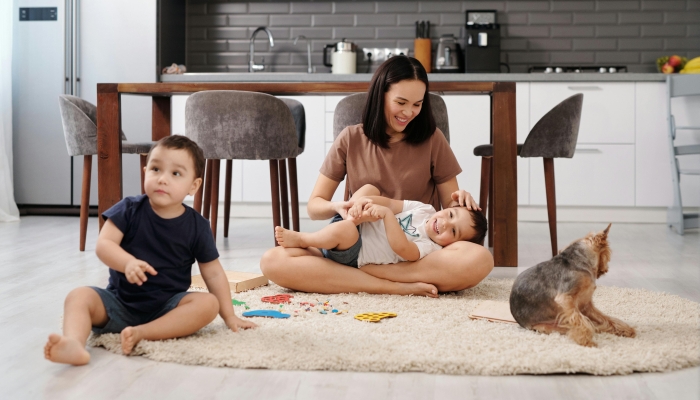
Parenting
How to Manage Twin Escalation Syndrome
Discover effective strategies for managing twin escalation syndrome, including promoting individuality and fostering positive interactions.